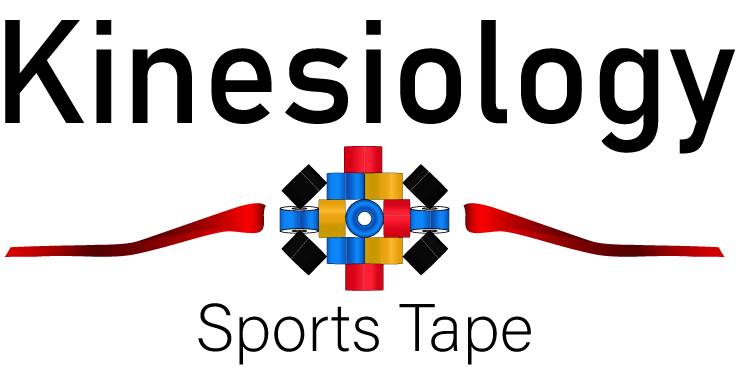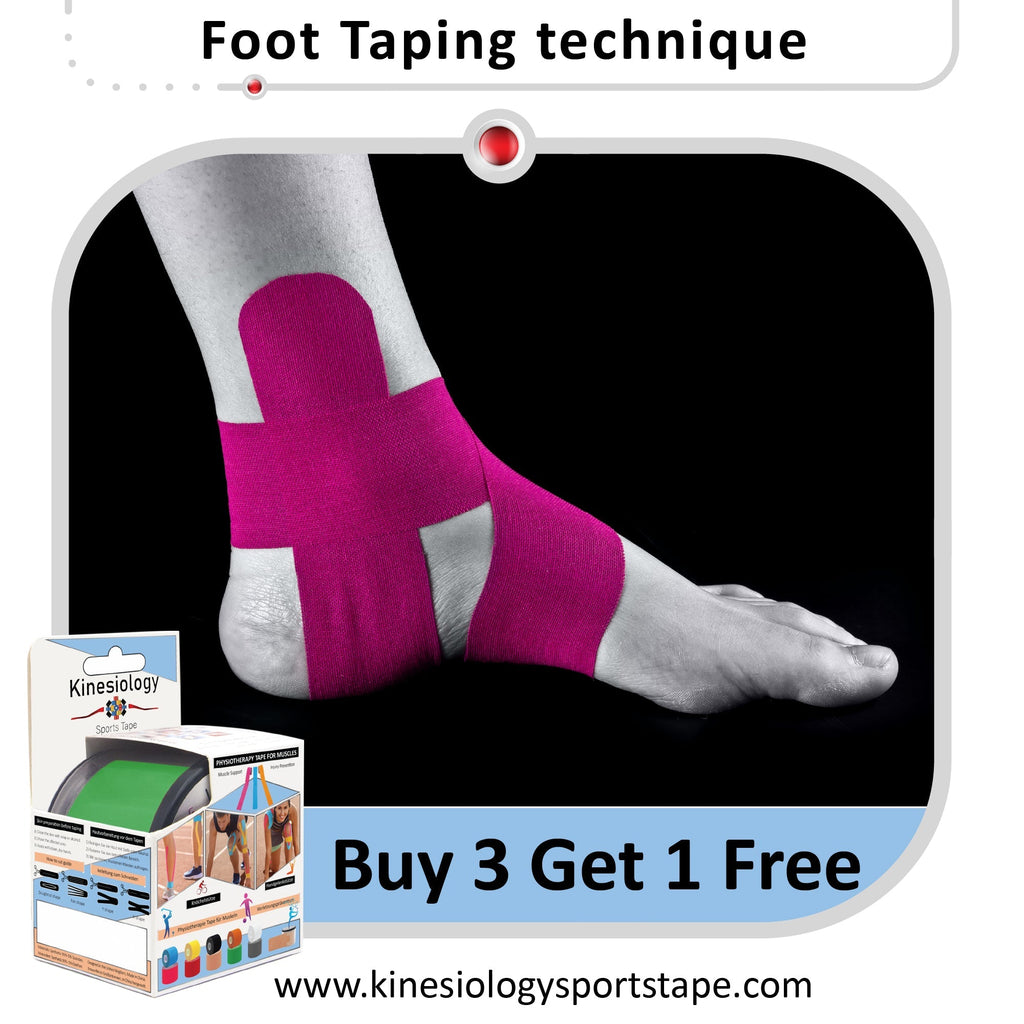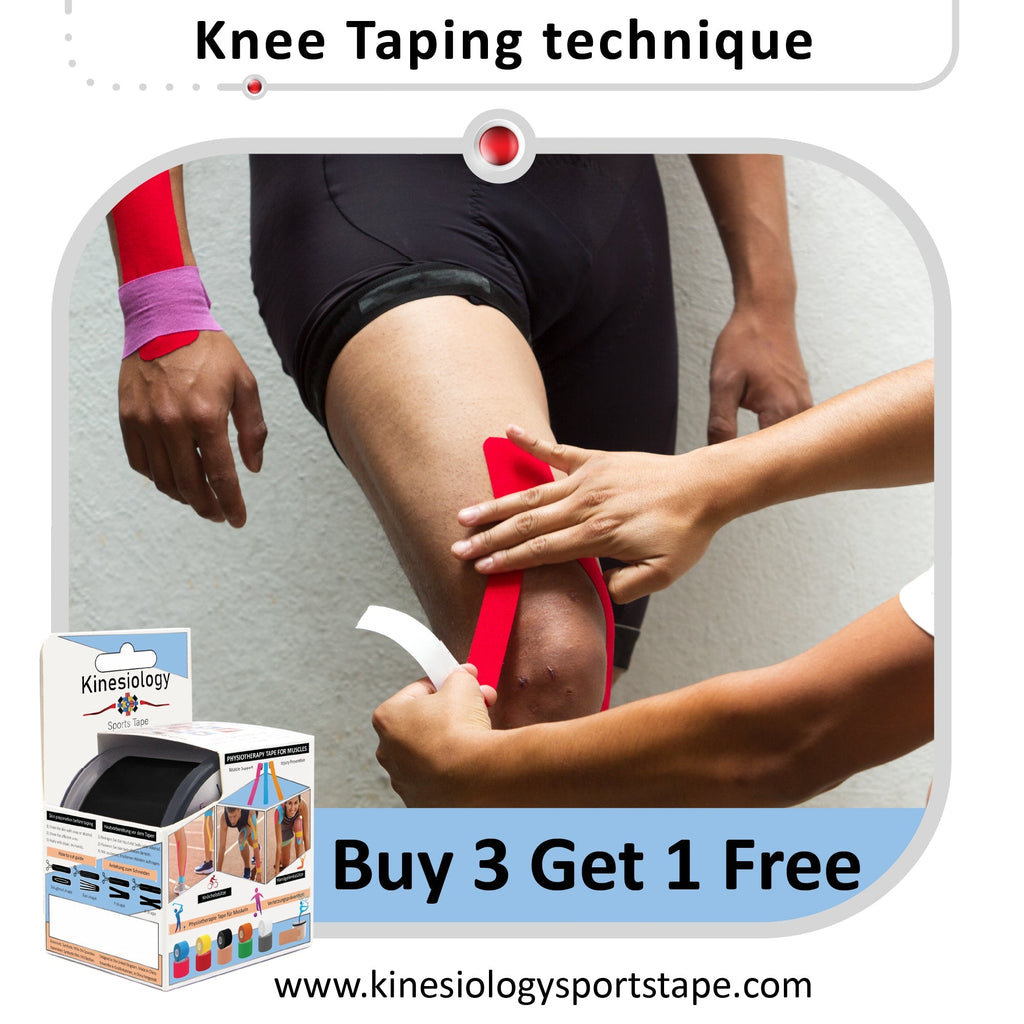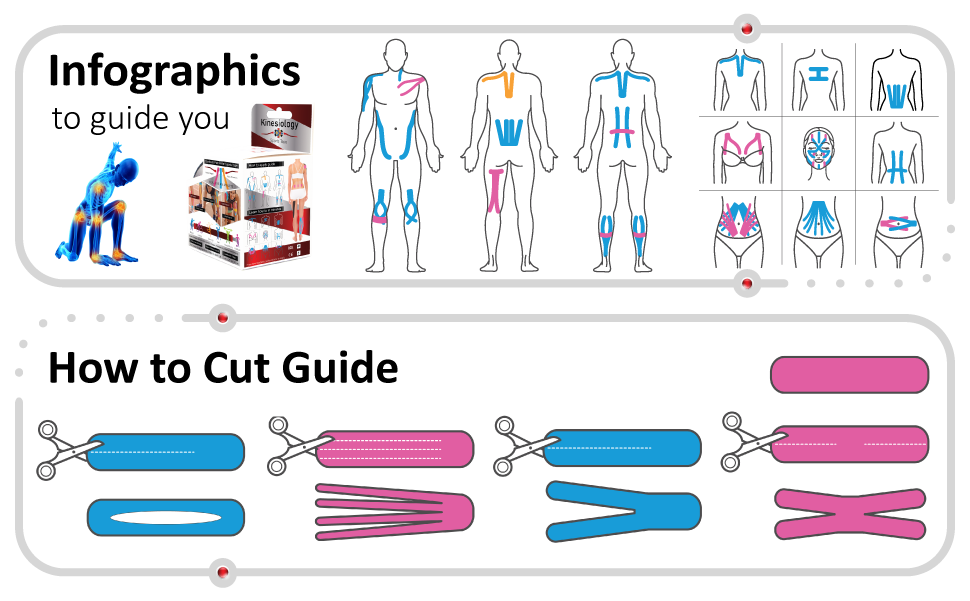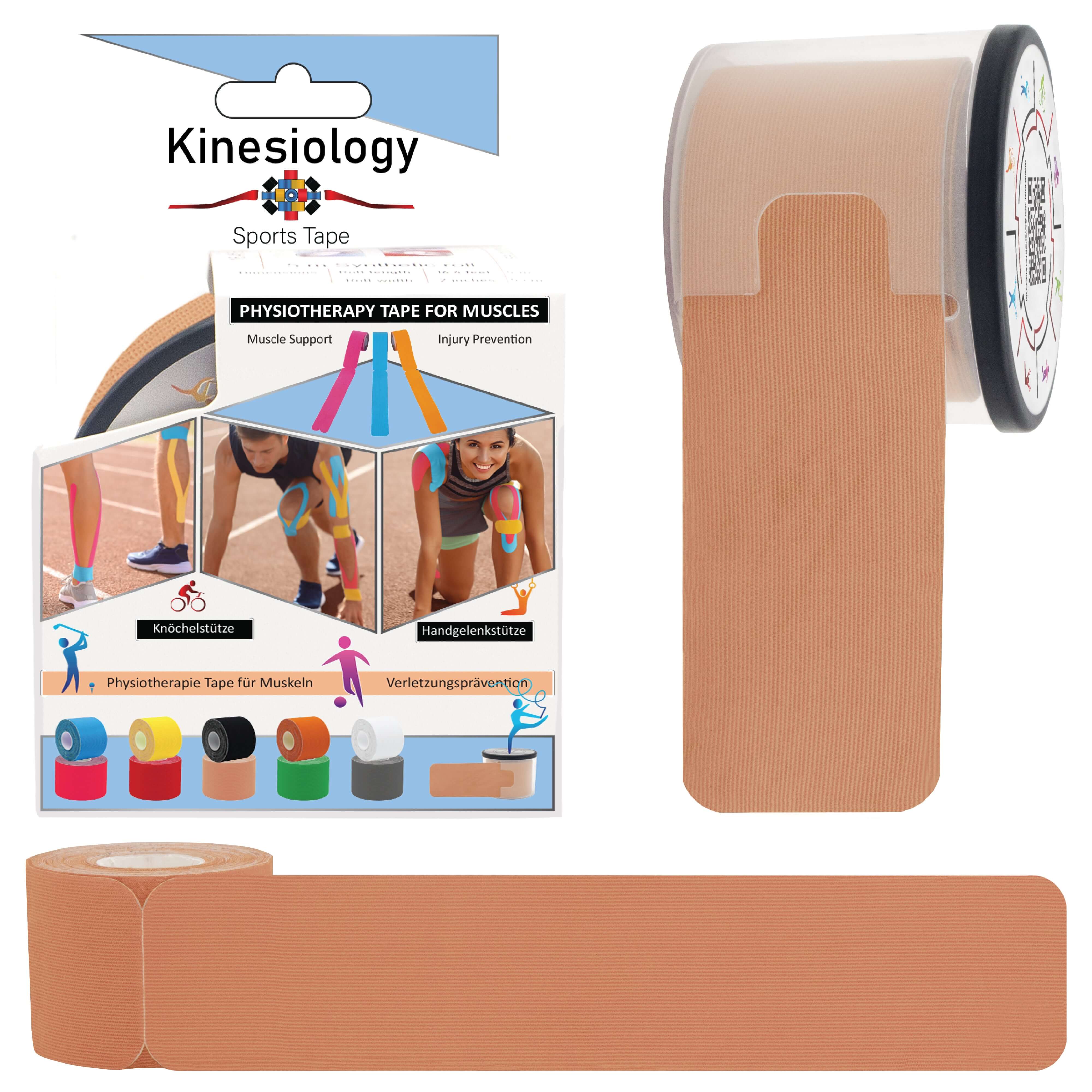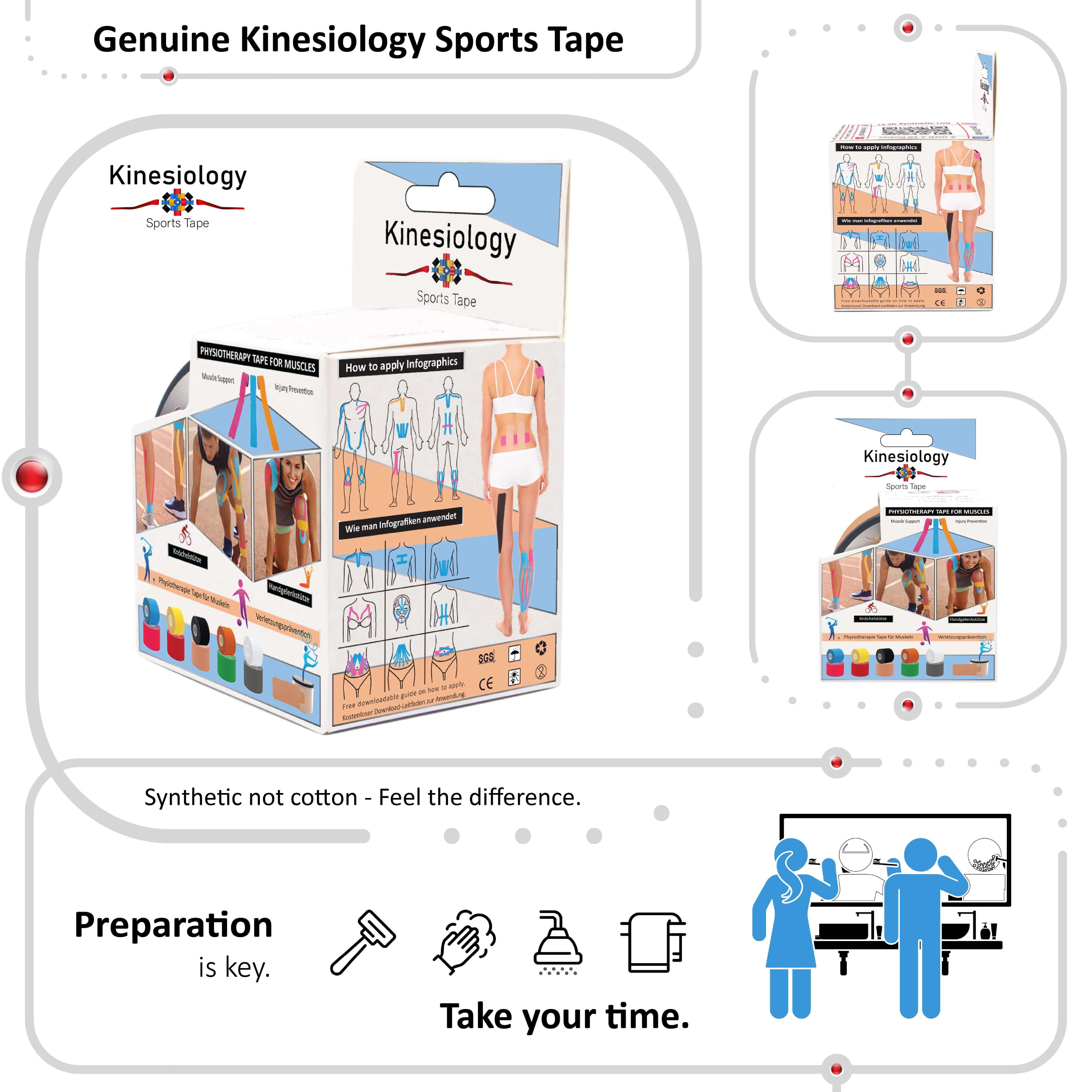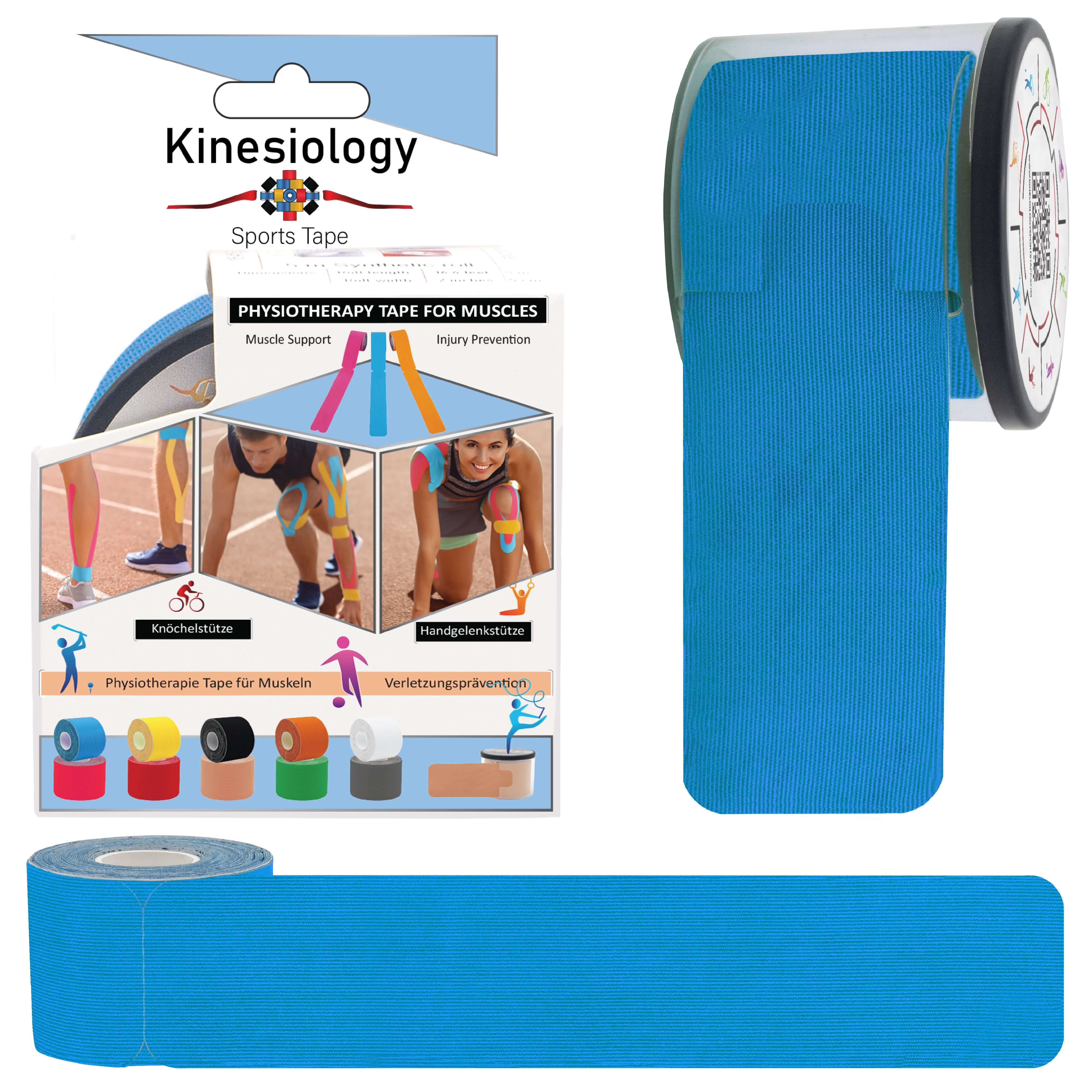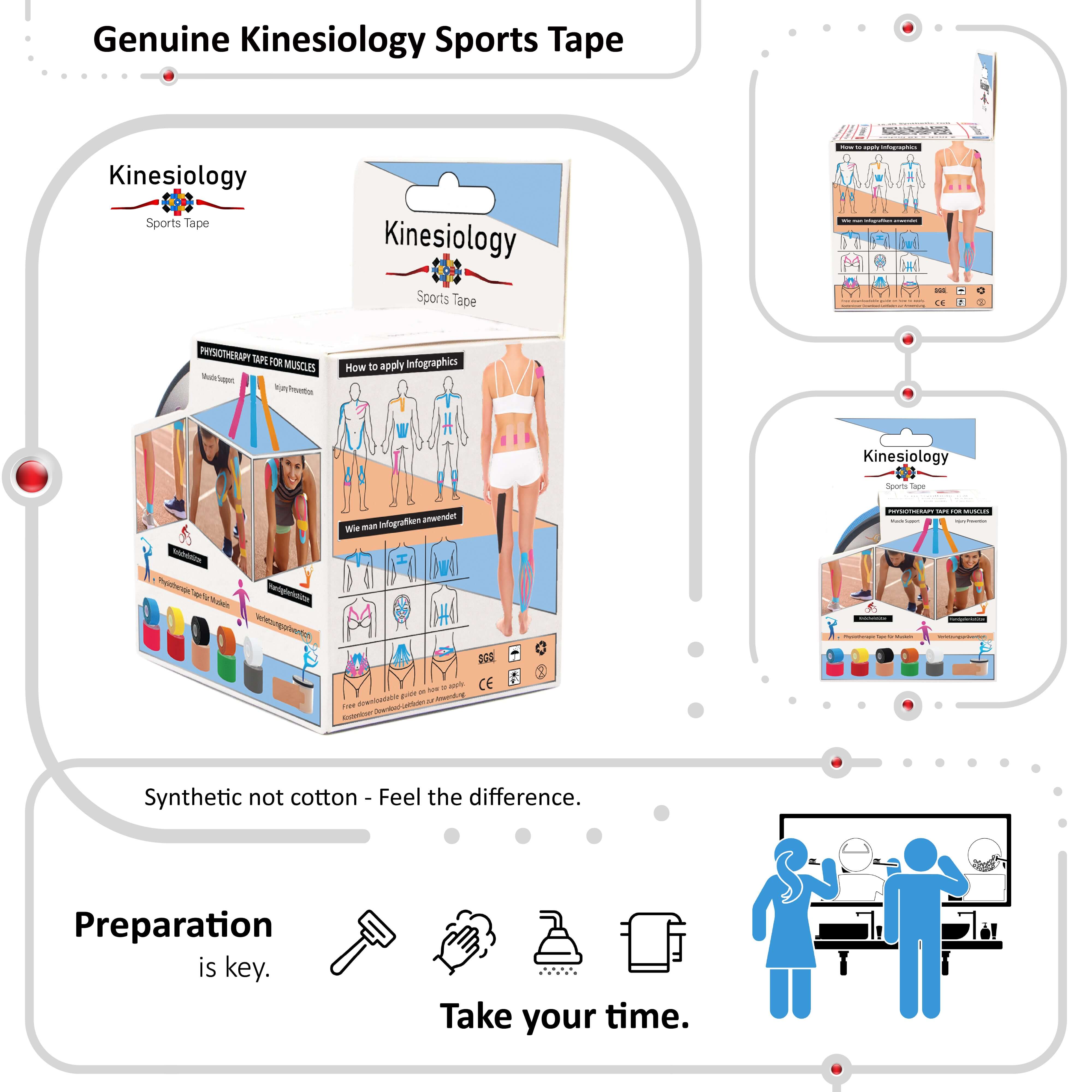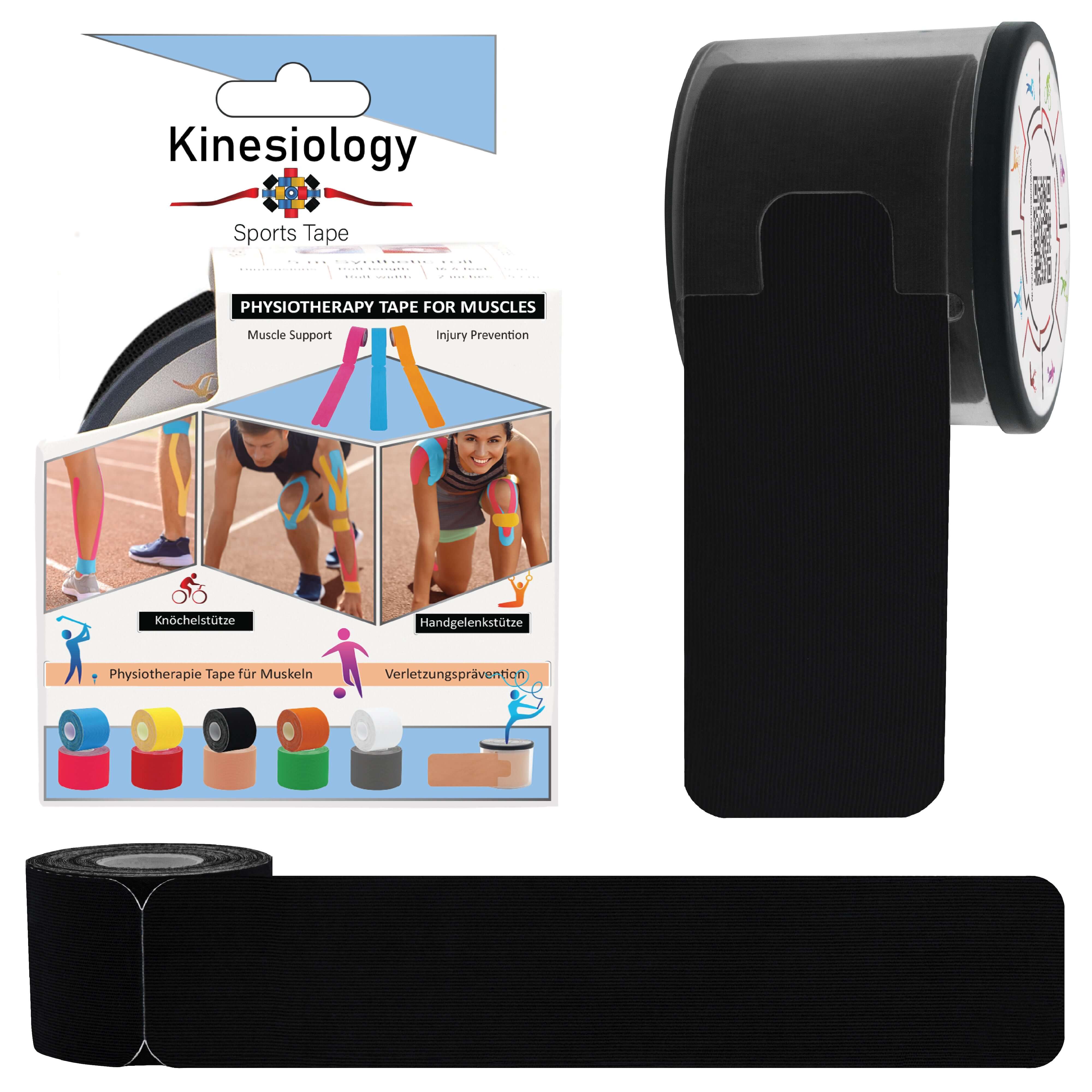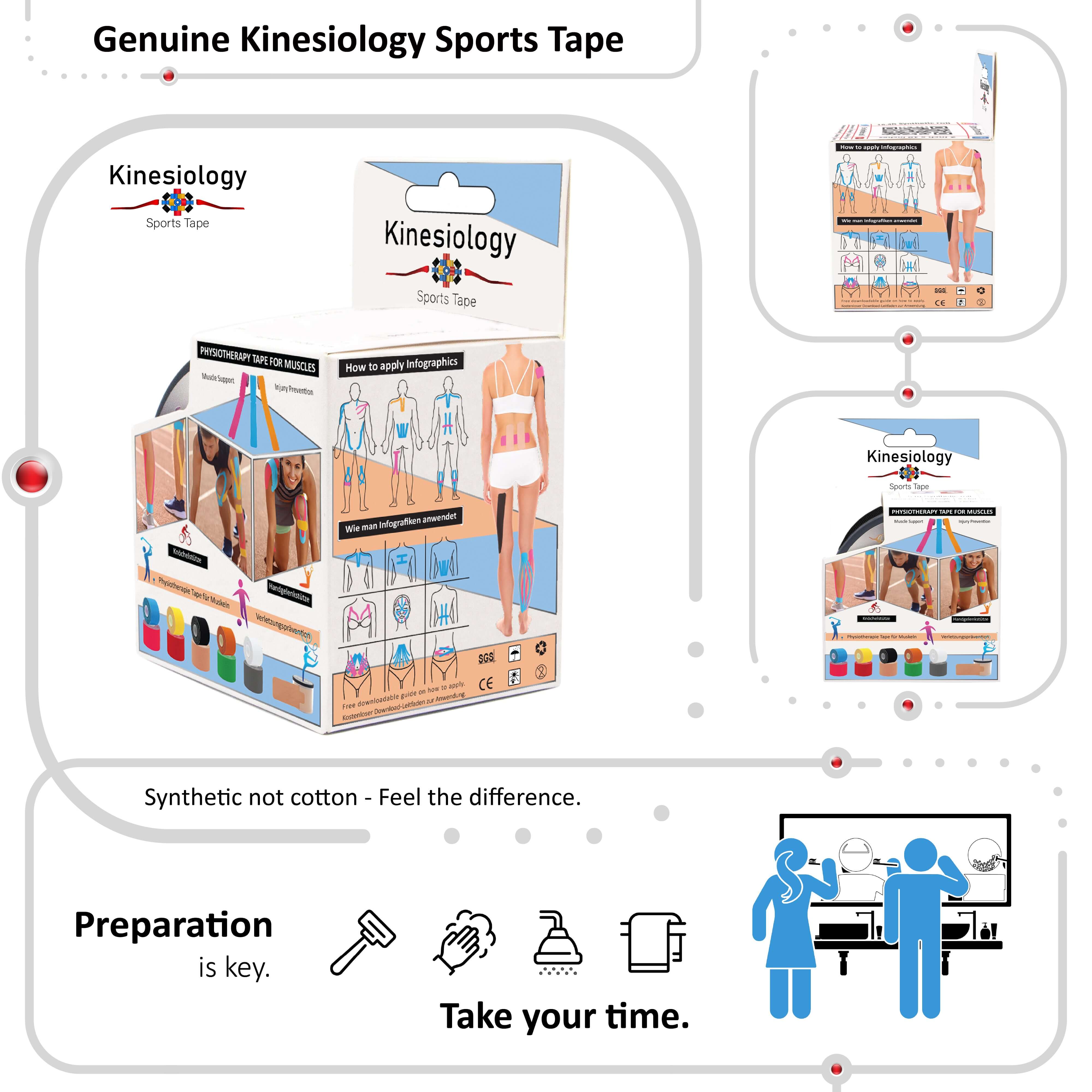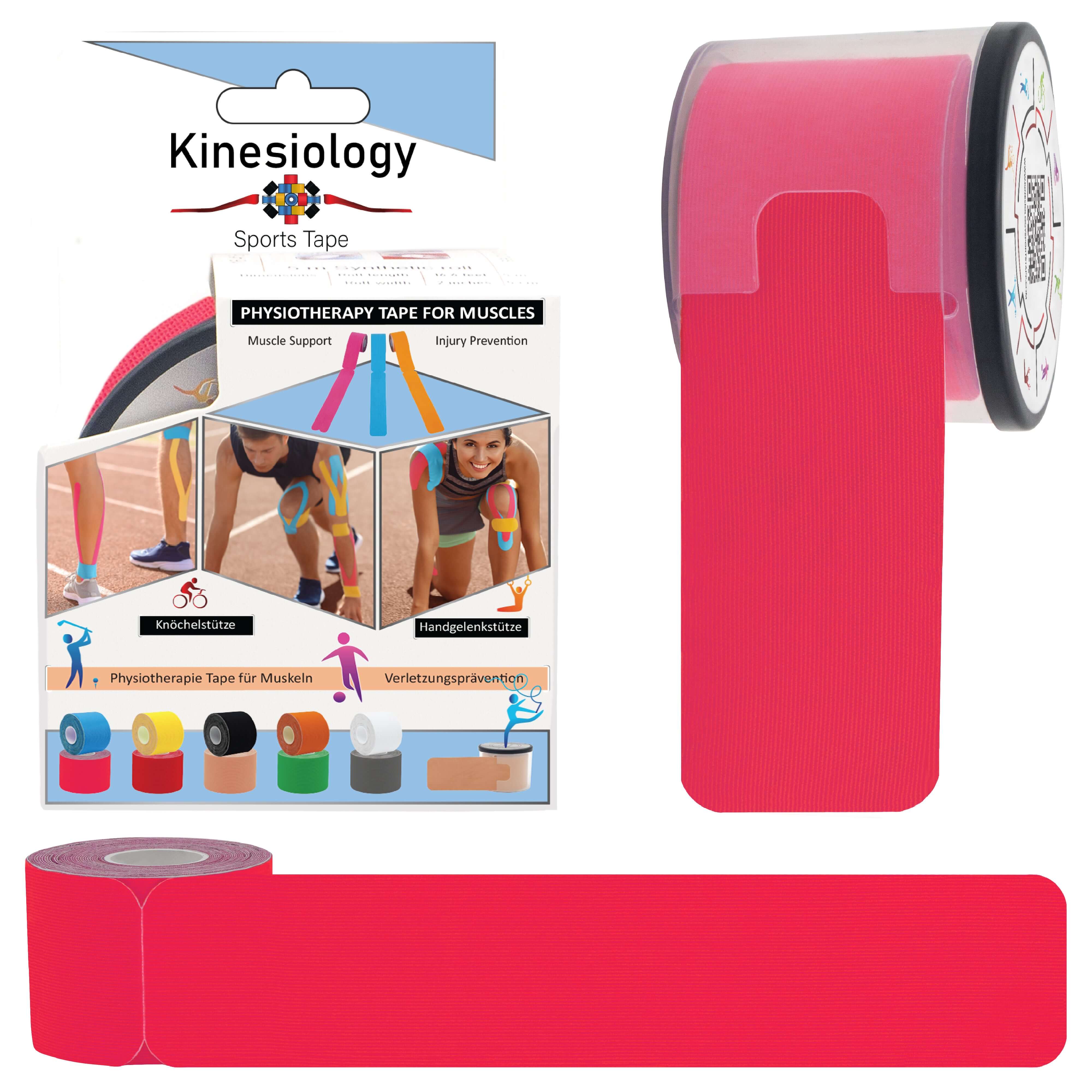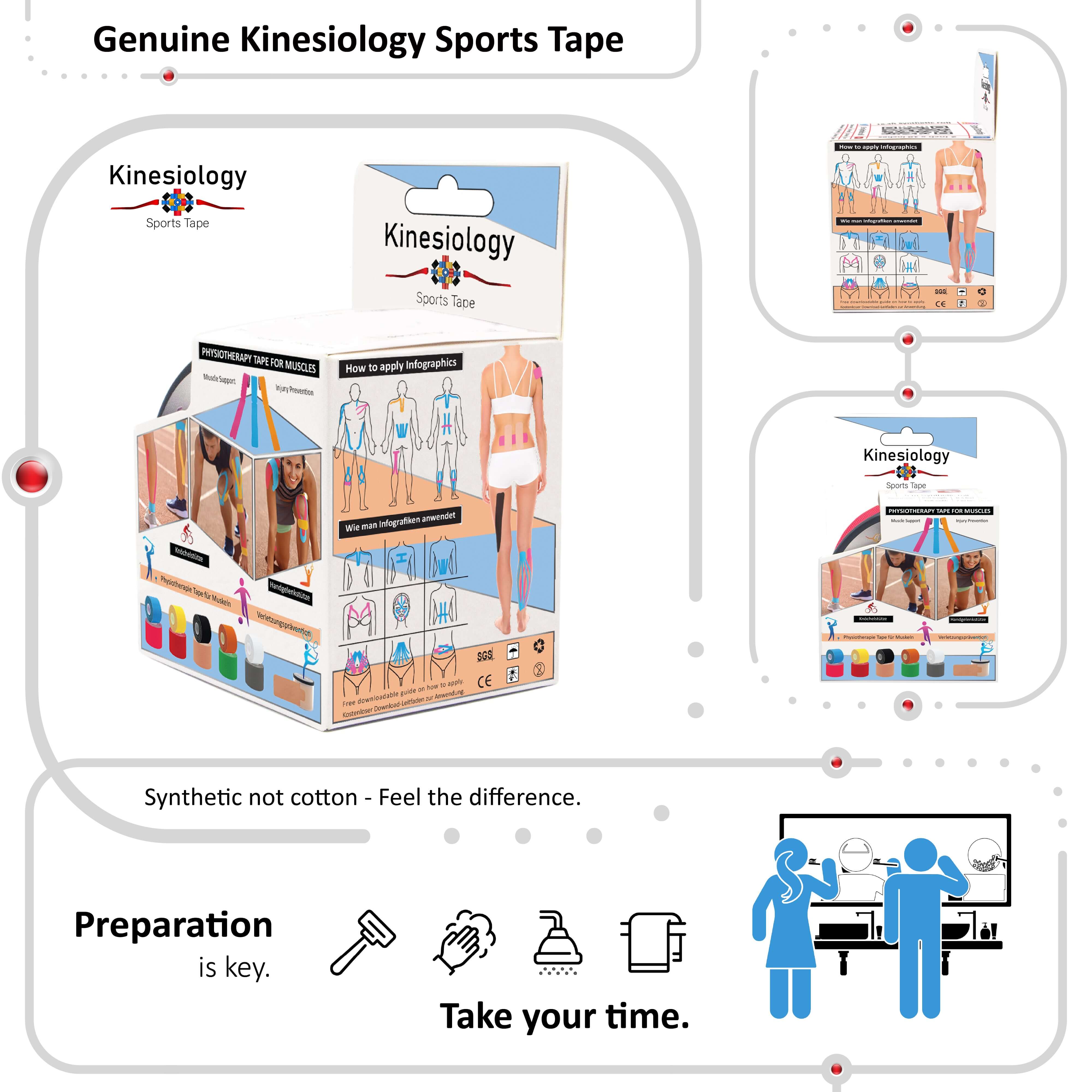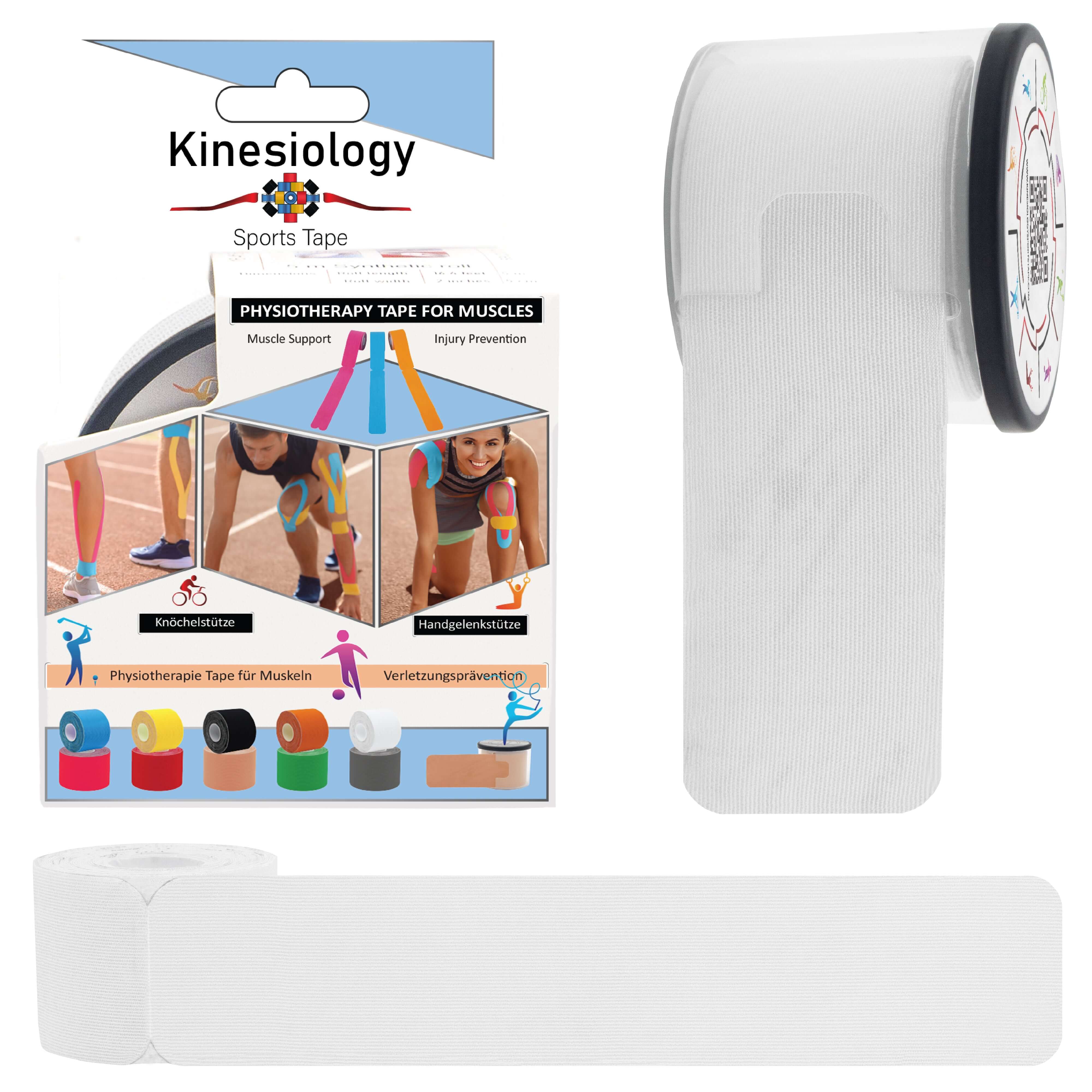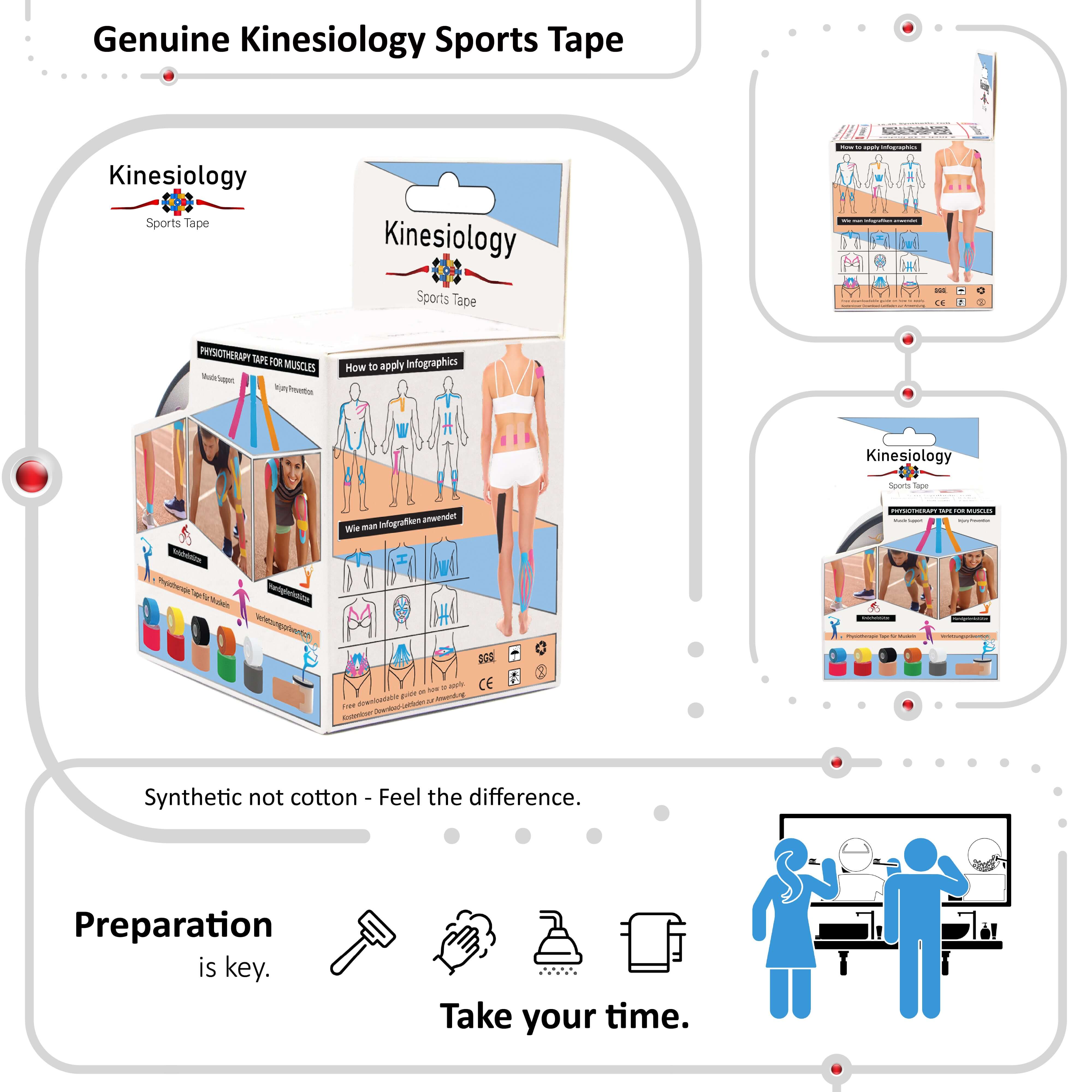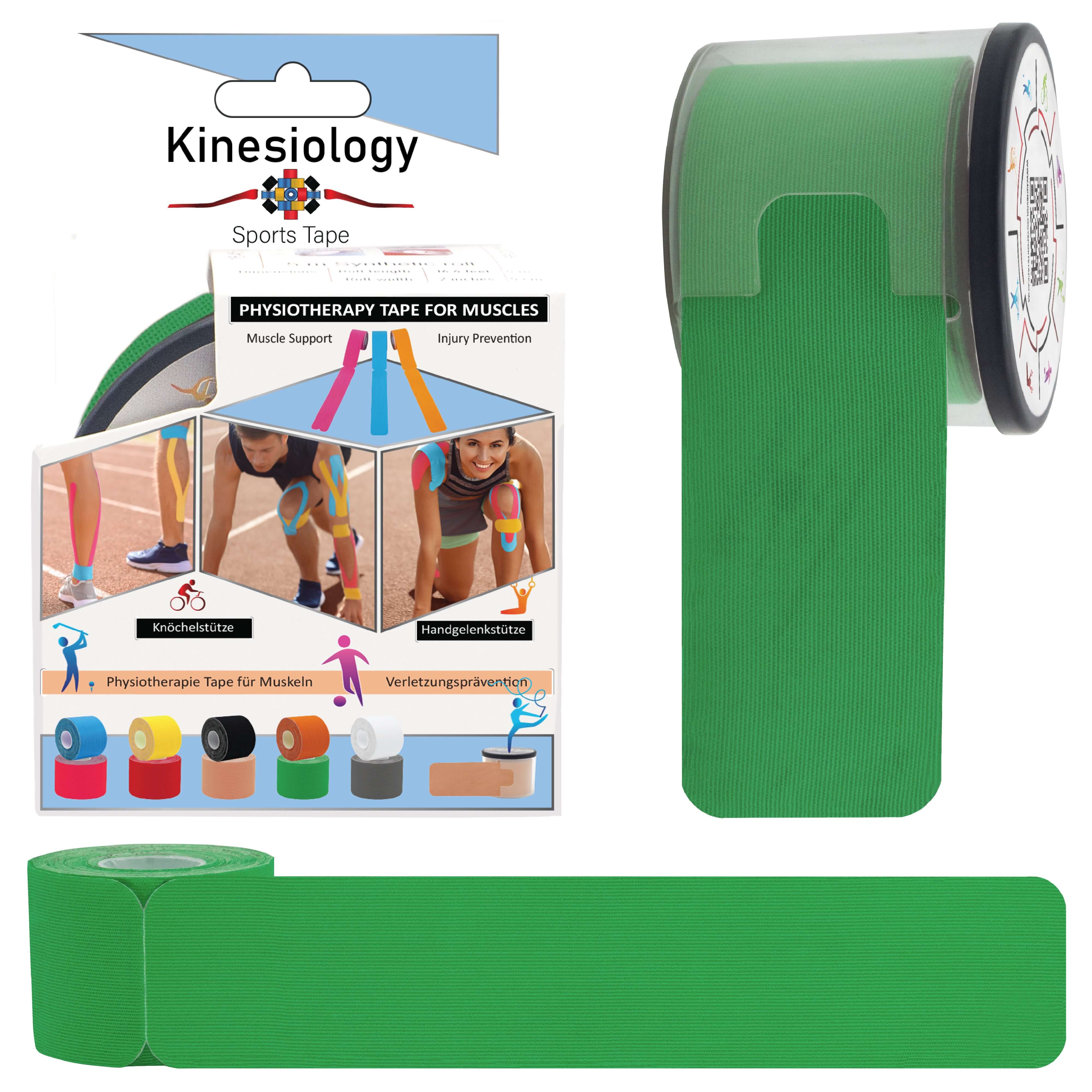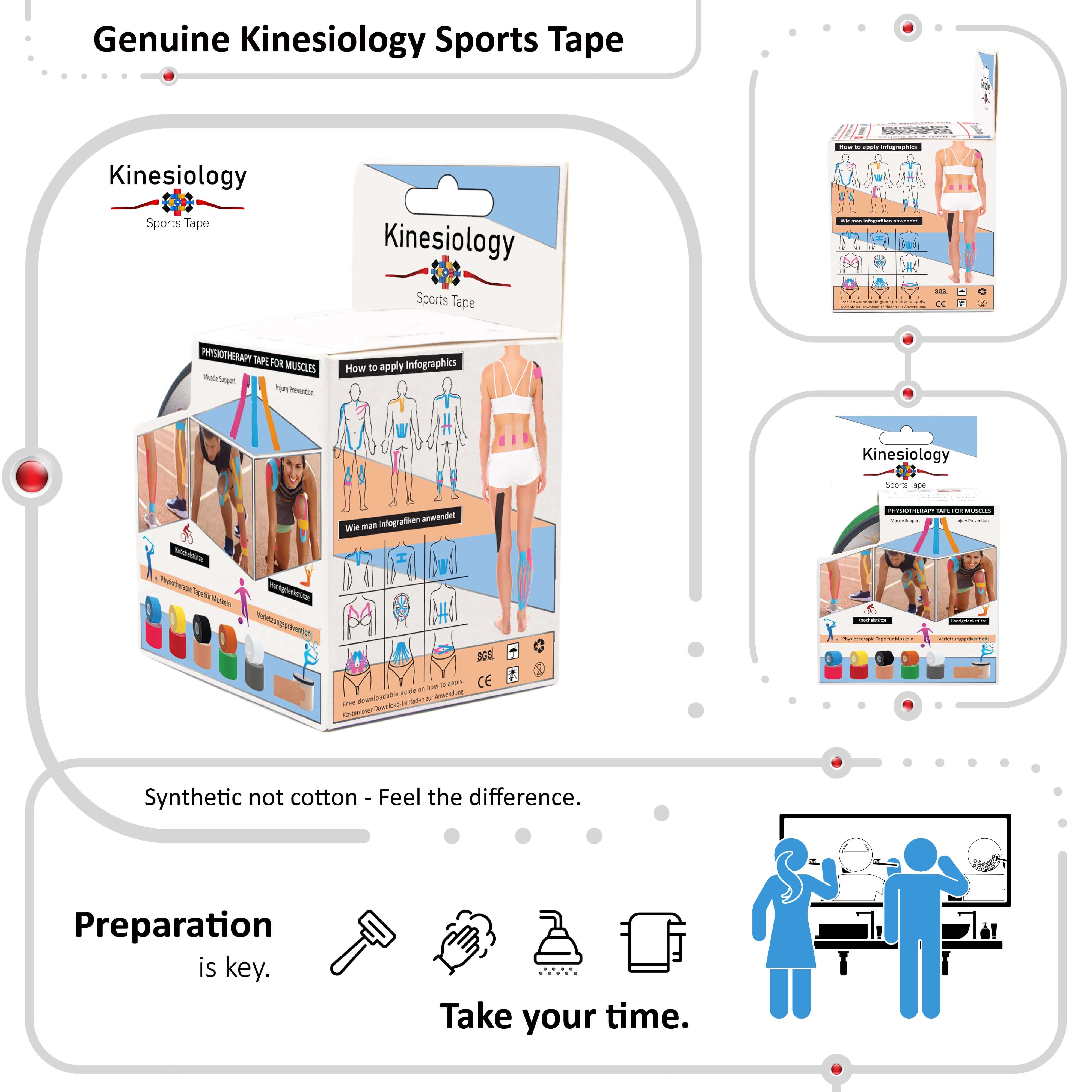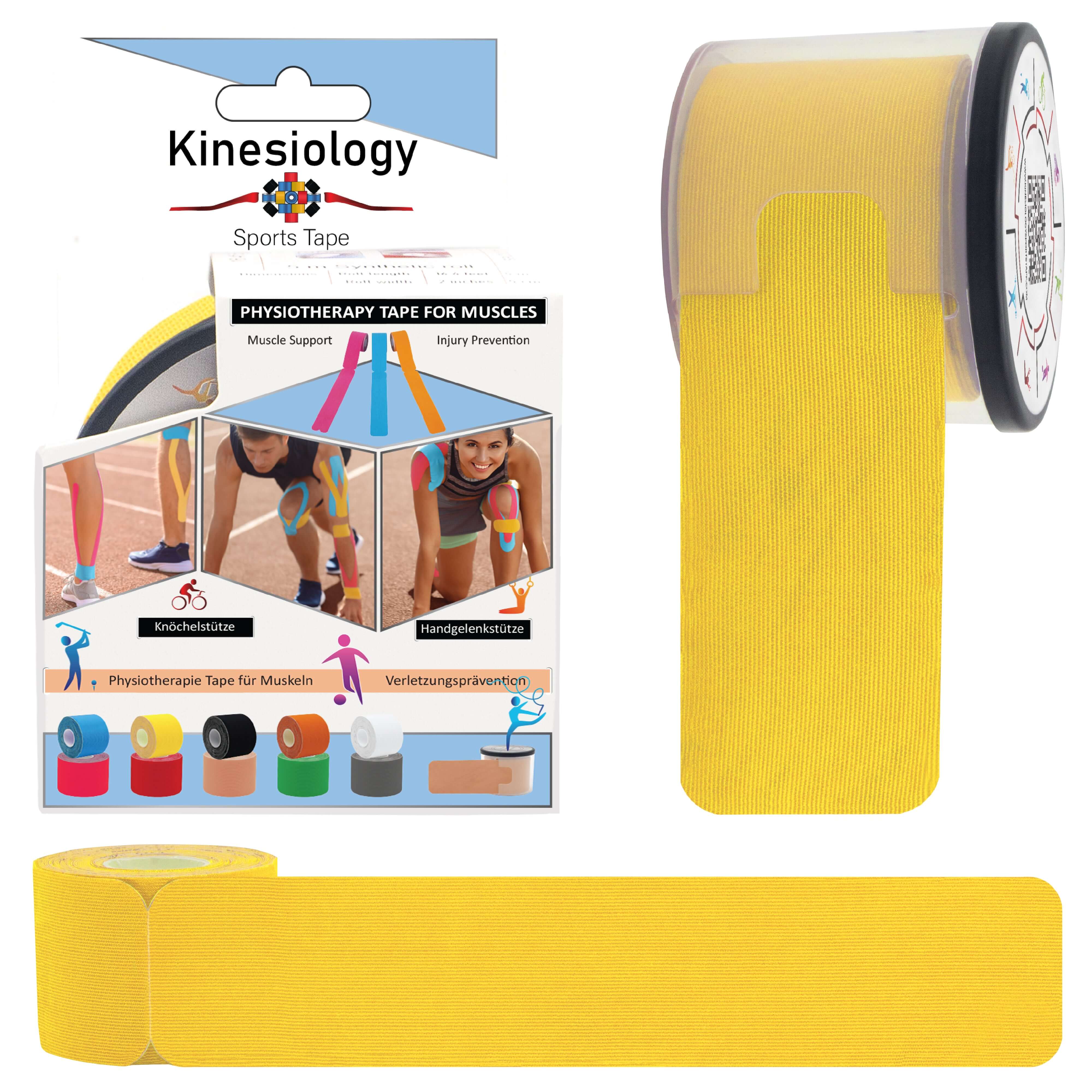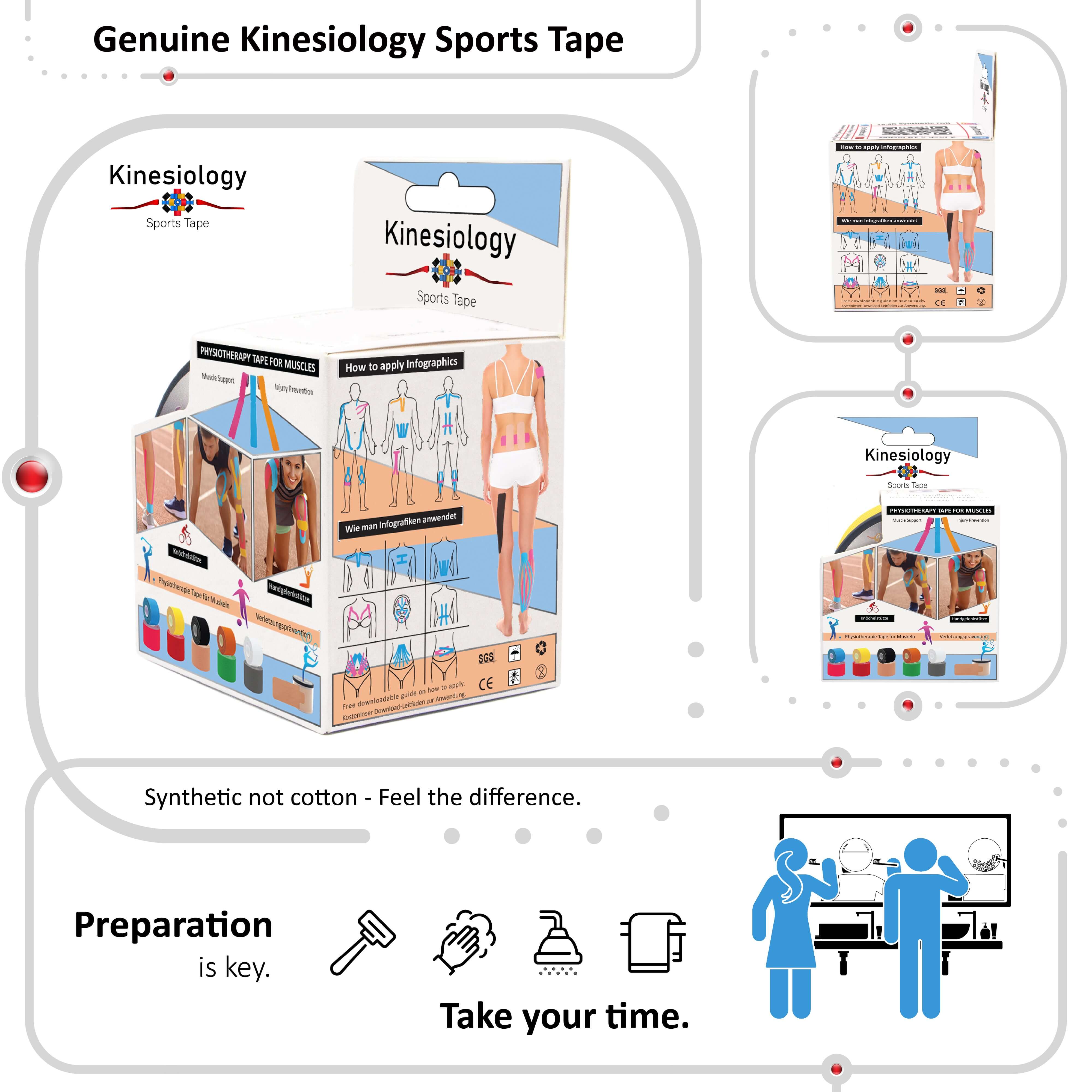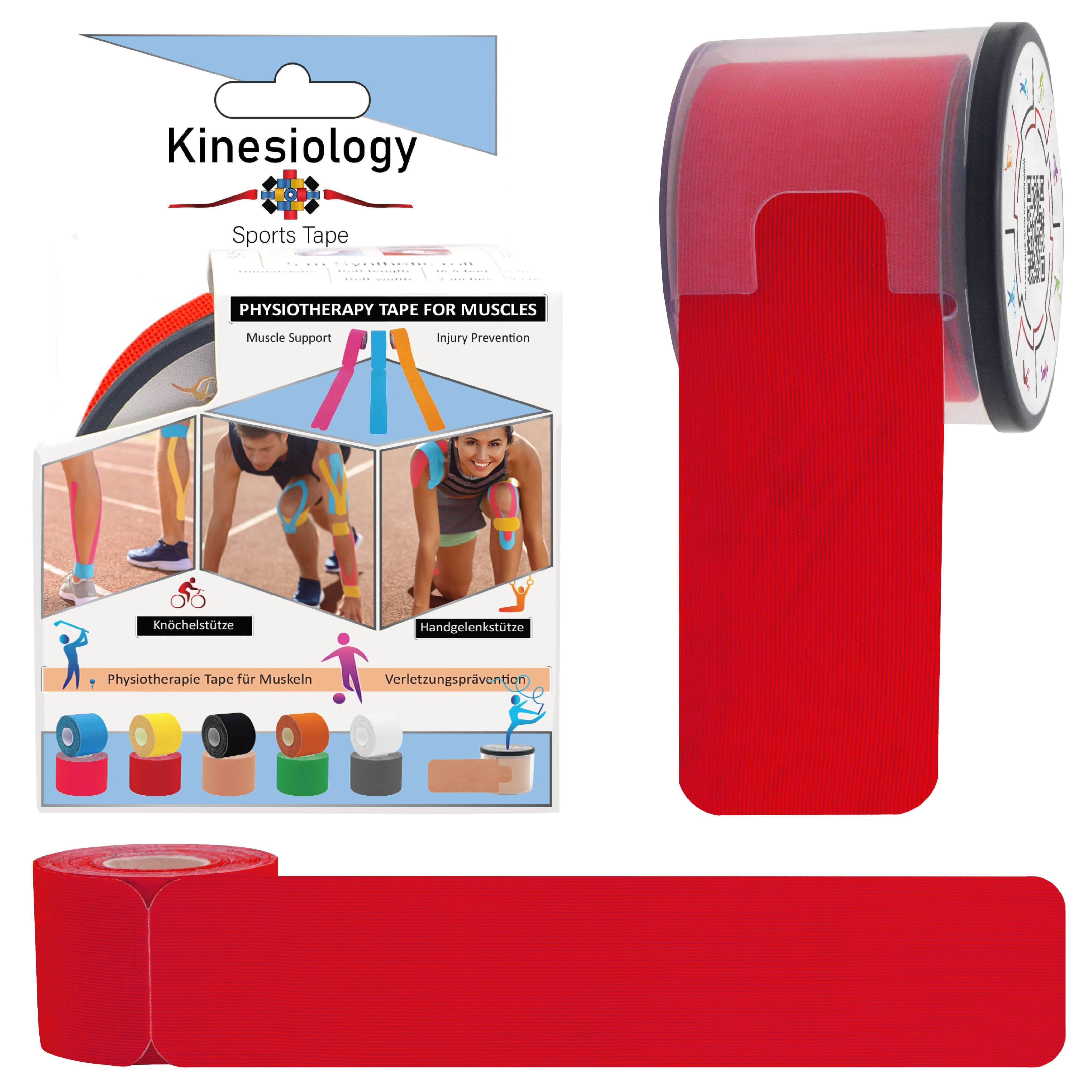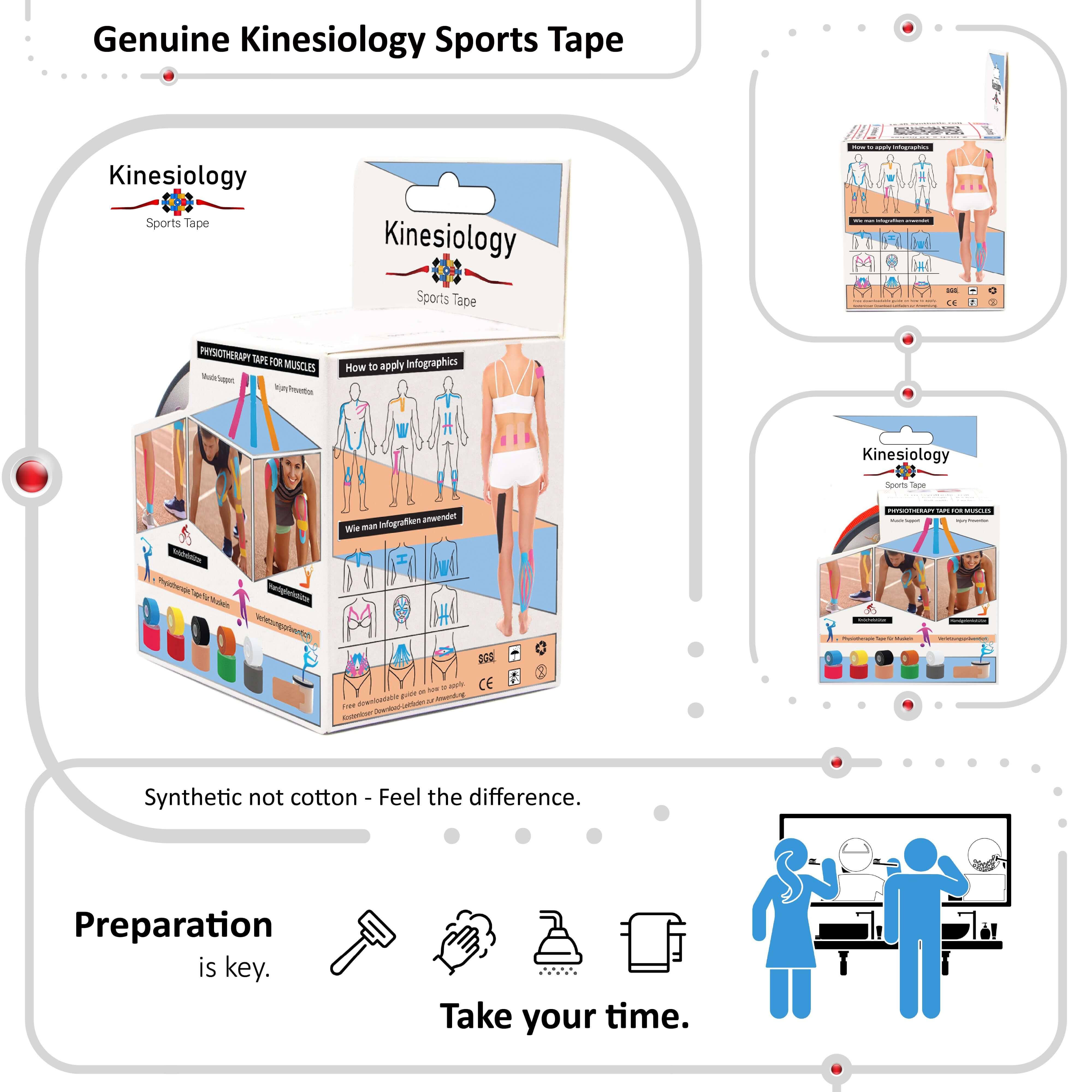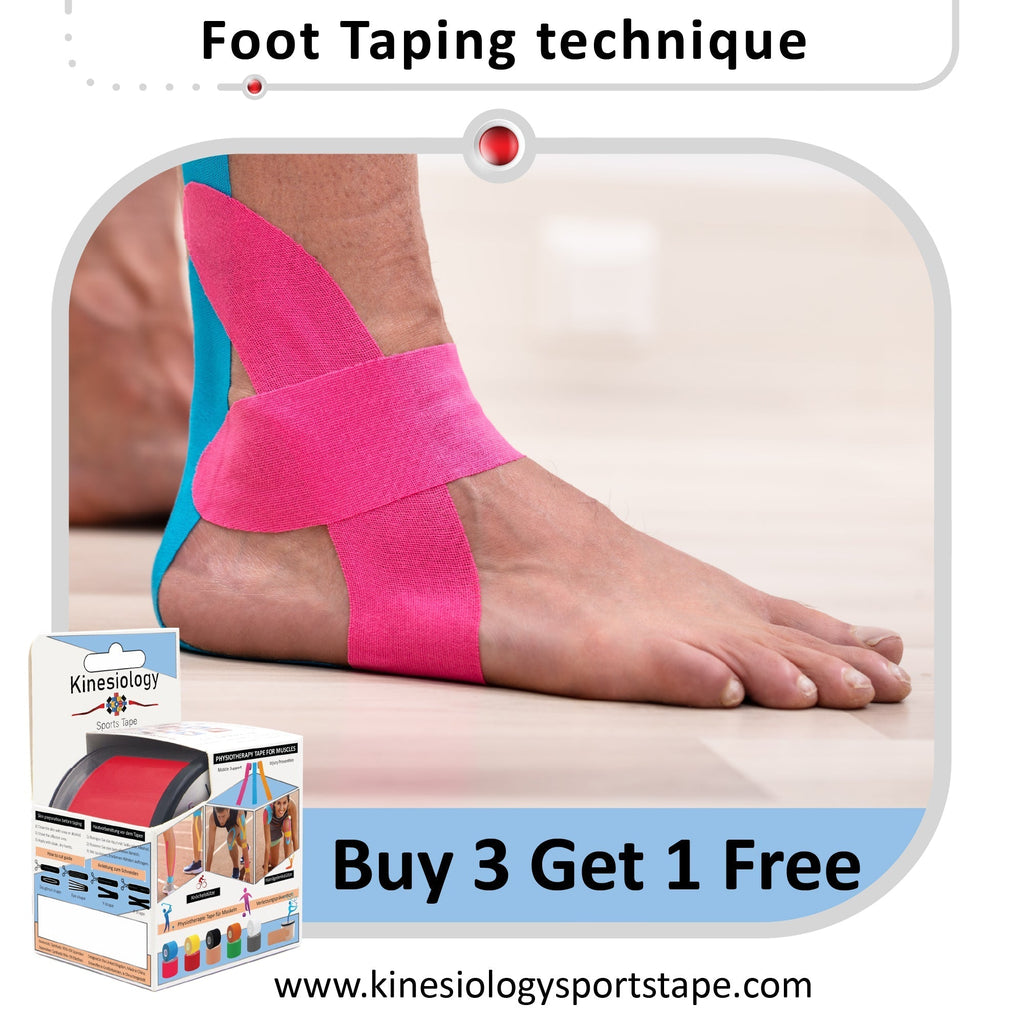
Kinesiology Tape for Plantar Fasciitis Treatment: Complete Pain Relief and Recovery Guide

Plantar fasciitis represents one of the most common and debilitating foot conditions, affecting millions of people worldwide and accounting for approximately 10% of all running-related injuries [1]. This painful condition involves inflammation and degeneration of the plantar fascia, a thick band of connective tissue that supports the arch of the foot and plays a crucial role in normal walking and running mechanics. The characteristic heel pain associated with plantar fasciitis can significantly impact daily activities, exercise participation, and overall quality of life, making effective treatment strategies essential for those affected by this condition.
Traditional treatment approaches for plantar fasciitis often involve rest, anti-inflammatory medications, orthotics, and physical therapy, but these methods can take months to provide relief and may not address all aspects of the condition [2]. Kinesiology tape has emerged as a revolutionary treatment option that offers immediate pain relief while supporting the healing process and allowing continued activity participation. Unlike rigid taping methods that restrict movement, kinesiology tape works with the foot's natural biomechanics to provide support, reduce pain, and enhance the body's healing mechanisms.
The effectiveness of kinesiology tape for plantar fasciitis has been extensively studied, with research demonstrating significant improvements in pain levels, functional capacity, and quality of life for individuals with this condition [3]. The tape's unique properties allow it to provide mechanical support to the plantar fascia while enhancing circulation, reducing inflammation, and improving proprioceptive feedback. This multifaceted approach makes kinesiology tape particularly valuable for plantar fasciitis treatment, as it addresses multiple aspects of the condition simultaneously.
The plantar fascia's role in foot function makes it particularly susceptible to injury and inflammation. This structure must absorb significant forces during weight-bearing activities while maintaining the foot's arch structure and providing elastic energy return during push-off [4]. When the plantar fascia becomes overloaded or dysfunctional, the resulting pain and inflammation can create a cycle of dysfunction that perpetuates the condition and delays healing.
This comprehensive guide explores the science behind kinesiology tape's effectiveness for plantar fasciitis, provides detailed application techniques for optimal pain relief and healing, and offers evidence-based strategies for integrating tape use with other treatment approaches. Whether you're dealing with acute plantar fasciitis or chronic heel pain, understanding how to properly apply and utilize kinesiology tape can be a game-changing addition to your treatment strategy.
Understanding Plantar Fasciitis: Anatomy, Causes, and Pain Patterns
The plantar fascia is a complex structure that plays multiple crucial roles in foot function and must be understood thoroughly to effectively treat plantar fasciitis with kinesiology tape. This thick, fibrous band of connective tissue originates from the medial calcaneal tuberosity on the heel bone and extends forward to insert into the base of each toe [5]. The plantar fascia consists of three distinct bands: the medial band, which is the largest and most commonly affected in plantar fasciitis, the central band, and the lateral band.
During normal walking and running, the plantar fascia undergoes significant mechanical stress as it supports the longitudinal arch of the foot and helps absorb shock during heel strike. The fascia also plays a crucial role in the windlass mechanism, which occurs during push-off when the toes extend and the plantar fascia tightens, creating a rigid lever for efficient propulsion [6]. This dual function of shock absorption and propulsion requires the plantar fascia to be both flexible and strong, making it susceptible to injury when these demands exceed its capacity.
Plantar fasciitis typically develops through a combination of mechanical overload, biomechanical dysfunction, and tissue degeneration. Common contributing factors include excessive pronation, limited ankle dorsiflexion, tight calf muscles, weak intrinsic foot muscles, and sudden increases in activity level [7]. The condition is particularly common in runners, individuals who spend long periods standing, and people with certain foot types such as high arches or flat feet.
The pathophysiology of plantar fasciitis involves both inflammatory and degenerative processes. Initially, mechanical overload leads to microscopic tears in the plantar fascia, triggering an inflammatory response [8]. Over time, repeated stress and inadequate healing can lead to degenerative changes in the tissue, including collagen breakdown and the formation of scar tissue. This combination of inflammation and degeneration explains why plantar fasciitis can be so persistent and challenging to treat.
Pain patterns in plantar fasciitis are typically characteristic and can help guide treatment decisions. The classic presentation involves sharp, stabbing pain at the heel that is worst with the first steps in the morning or after periods of rest [9]. This pain often improves with initial activity as the tissue warms up, but may worsen again with prolonged activity or at the end of the day. The pain is usually localized to the medial aspect of the heel, corresponding to the origin of the plantar fascia.
Understanding these anatomical and pathophysiological factors is crucial for effective kinesiology tape application because the tape must be positioned and tensioned to address the specific mechanical and physiological issues contributing to each individual's plantar fasciitis [10]. The tape's ability to provide support, reduce stress on the plantar fascia, and enhance healing makes it particularly well-suited for this condition.
The Science Behind Kinesiology Tape's Effectiveness for Plantar Fasciitis
The therapeutic effects of kinesiology tape on plantar fasciitis operate through multiple mechanisms that work synergistically to reduce pain, support healing, and improve function. Understanding these scientific principles helps explain why kinesiology tape can be so effective for plantar fasciitis and guides optimal application techniques [11].
Mechanical support represents one of the most important ways kinesiology tape benefits plantar fasciitis. When properly applied, the tape can help support the longitudinal arch of the foot and reduce stress on the plantar fascia during weight-bearing activities [12]. This mechanical support is particularly valuable during the acute phase of plantar fasciitis when the tissue is inflamed and painful. The tape's elastic properties allow it to provide dynamic support that adapts to the changing demands of different activities while maintaining consistent support throughout the day.
The lifting effect created by kinesiology tape plays a crucial role in plantar fasciitis treatment by improving circulation and reducing inflammation. When applied correctly, the tape creates microscopic lifts in the skin that increase the space between the skin and underlying tissues [13]. This increased space promotes better circulation of blood and lymphatic fluids, helping to reduce inflammation and accelerate the removal of metabolic waste products that can contribute to pain and delayed healing.
Pain modulation through the gate control mechanism provides immediate relief for many individuals with plantar fasciitis. The sensory input from kinesiology tape can inhibit pain signals at the spinal cord level, reducing the perception of pain without interfering with important protective sensations [14]. This pain relief can be particularly valuable in the morning when plantar fasciitis pain is typically at its worst, allowing individuals to begin their daily activities with greater comfort and confidence.
Proprioceptive enhancement is another important mechanism by which kinesiology tape benefits plantar fasciitis. The tape provides continuous sensory feedback about foot position and movement, which can help improve movement patterns and reduce stress on the plantar fascia [15]. This enhanced proprioception is particularly valuable for individuals whose plantar fasciitis is related to biomechanical dysfunction or poor movement patterns.
The neurological effects of kinesiology tape can help address muscle dysfunction that often accompanies plantar fasciitis. Many individuals with this condition develop weakness or inhibition in the intrinsic foot muscles, which play important roles in arch support and shock absorption [16]. Kinesiology tape can help facilitate these muscles while potentially reducing overactivity in compensatory muscles, helping to restore more normal muscle function and movement patterns.
Research studies have consistently demonstrated the effectiveness of kinesiology tape for plantar fasciitis. A systematic review published in the Journal of Foot and Ankle Research found that kinesiology tape significantly reduced pain and improved function in individuals with plantar fasciitis compared to control groups [17]. Another study in the American Journal of Physical Medicine and Rehabilitation showed that kinesiology tape was more effective than traditional low-dye taping for reducing pain and improving comfort in individuals with acute plantar fasciitis [18].
The anti-inflammatory effects of kinesiology tape may also contribute to its effectiveness for plantar fasciitis. The improved circulation and lymphatic drainage promoted by the tape can help reduce local inflammation and accelerate the healing process [19]. This is particularly important in plantar fasciitis, where chronic inflammation can perpetuate pain and delay recovery.
Comprehensive Assessment for Plantar Fasciitis Taping
Before applying kinesiology tape for plantar fasciitis, a thorough assessment is essential to identify contributing factors and determine the most appropriate taping strategy. This assessment should include evaluation of pain patterns, foot structure, biomechanics, and functional limitations [20].
Pain assessment should begin with a detailed history of the plantar fasciitis, including the onset, duration, and characteristics of the pain. Understanding the specific activities that aggravate or relieve the pain provides valuable insights into the mechanical factors contributing to the condition [21]. The location and intensity of pain should be documented, as this information helps guide tape placement and tension decisions.
Foot structure assessment is crucial because certain foot types are more predisposed to plantar fasciitis. High-arched feet tend to be more rigid and may not absorb shock effectively, while flat feet may place excessive stress on the plantar fascia due to overpronation [22]. The height and flexibility of the medial longitudinal arch should be assessed in both weight-bearing and non-weight-bearing positions to understand how the foot responds to load.
Range of motion assessment should focus on ankle dorsiflexion and first metatarsophalangeal joint extension, as limitations in these movements are commonly associated with plantar fasciitis. Ankle dorsiflexion should be assessed with the knee both straight and bent to differentiate between gastrocnemius and soleus tightness [23]. Limited dorsiflexion can increase stress on the plantar fascia during walking and running, making it an important factor to address in treatment.
Muscle strength and flexibility assessment should include the calf muscles, intrinsic foot muscles, and hip muscles. Weakness in the intrinsic foot muscles can reduce arch support and increase stress on the plantar fascia, while tightness in the calf muscles can limit ankle dorsiflexion and alter foot mechanics [24]. Hip muscle weakness, particularly in the gluteus medius, can contribute to excessive pronation and increased plantar fascia stress.
Biomechanical assessment should include observation of walking and running patterns if appropriate. Excessive pronation, early heel rise, or other gait deviations can contribute to plantar fasciitis and may need to be addressed as part of a comprehensive treatment approach [25]. Simple observational gait analysis can provide valuable insights into movement patterns that may be contributing to the condition.
Functional assessment should include activities that are important to the individual, such as walking, stair climbing, or sport-specific movements. Understanding how plantar fasciitis impacts daily activities and recreational pursuits helps establish treatment goals and guides the selection of appropriate taping strategies [26].
Footwear assessment is often overlooked but can be crucial for plantar fasciitis management. Worn or inappropriate footwear can contribute to biomechanical dysfunction and increase stress on the plantar fascia [27]. The condition of the individual's shoes, including wear patterns and support features, should be evaluated as part of the comprehensive assessment.
Based on the assessment findings, specific taping goals can be established. These might include pain reduction, arch support, biomechanical correction, or activity-specific support. Clear goals help guide tape selection, application technique, and evaluation of treatment effectiveness [28].
Essential Kinesiology Tape Application Techniques for Plantar Fasciitis
Mastering the fundamental application techniques for plantar fasciitis taping is essential for achieving optimal therapeutic outcomes. The foot's complex anatomy and the specific demands placed on the plantar fascia require specialized approaches that differ from taping other body parts [29].
Preparation for plantar fasciitis taping begins with proper positioning and skin preparation. The individual should be positioned comfortably with the foot accessible for taping, typically lying supine or sitting with the leg extended [30]. The foot should be positioned in slight dorsiflexion to place the plantar fascia in a lengthened position during tape application. This positioning ensures that the tape will provide appropriate support when the foot is in a neutral or plantarflexed position during weight-bearing activities.
Skin preparation is particularly important for foot applications due to the potential for moisture, friction, and the need for secure adhesion during weight-bearing activities. The foot should be thoroughly cleaned and dried, with particular attention to removing any lotions, oils, or dead skin that could interfere with tape adhesion [31]. For individuals with excessive hair on the foot, trimming may be necessary to ensure proper tape contact with the skin.
The basic plantar fascia support technique involves applying tape along the length of the plantar fascia from the heel to the toes. This fundamental application provides direct support to the plantar fascia and helps reduce stress on the tissue during weight-bearing activities [32]. The tape should be applied with the foot in dorsiflexion and the toes extended to ensure appropriate tension when the foot returns to a neutral position.
Anchor placement is critical for plantar fasciitis applications due to the significant forces that the foot experiences during weight-bearing activities. The posterior anchor is typically placed on the heel, avoiding areas that will experience direct pressure during heel strike [33]. The anterior anchors are usually placed on the toes or forefoot, depending on the specific taping technique being used.
The low-dye technique adaptation using kinesiology tape provides comprehensive arch support and is particularly effective for individuals with excessive pronation or arch collapse. This technique involves applying tape in a pattern that supports the medial longitudinal arch while providing stability to the midfoot [34]. The elastic properties of kinesiology tape allow this technique to provide dynamic support while maintaining foot flexibility.
Tension application for plantar fasciitis taping typically ranges from 25-50% of the tape's maximum stretch, depending on the specific goals and the individual's tolerance. Higher tensions may be appropriate for providing mechanical support during activities, while lower tensions may be better for pain relief and circulation enhancement [35]. The key is to apply enough tension to achieve the desired therapeutic effect without causing discomfort or restricting normal foot function.
Direction of application should follow the natural lines of the plantar fascia and support the foot's arch structure. For basic plantar fascia support, tape is typically applied from posterior to anterior, following the direction of the fascial fibers [36]. Additional strips may be applied in different directions to provide comprehensive support and address specific biomechanical issues.
Specific Taping Protocols for Different Plantar Fasciitis Presentations
Different presentations of plantar fasciitis may require specific taping approaches to address their unique characteristics and contributing factors. Understanding these variations ensures that kinesiology tape is applied in the most effective manner for each individual's specific needs [37].
Acute plantar fasciitis, characterized by recent onset and significant inflammation, requires gentle taping approaches that focus on pain relief and inflammation reduction. These applications typically use lower tensions and may incorporate lymphatic drainage techniques to help reduce swelling and promote healing [38]. The primary goals are to provide comfort and support while allowing the inflammatory process to resolve naturally.
For acute presentations, a gentle arch support application may be most appropriate, using 15-25% tension to provide support without aggravating the inflamed tissue. Fan cuts may be incorporated to enhance lymphatic drainage and reduce inflammation [39]. The tape should be applied to provide support during weight-bearing activities while promoting circulation and healing between activities.
Chronic plantar fasciitis, which has persisted for several months or longer, often requires more aggressive taping approaches that address biomechanical dysfunction and tissue remodeling. These applications may use higher tensions and more comprehensive support patterns to help break the cycle of dysfunction and promote tissue healing [40]. The focus shifts from inflammation management to mechanical support and movement pattern correction.
For chronic presentations, comprehensive arch support techniques that address multiple aspects of foot function may be most effective. This might include combinations of plantar fascia support, arch support, and heel stabilization [41]. The tape should be applied to provide consistent support throughout daily activities while encouraging proper foot mechanics.
Plantar fasciitis associated with excessive pronation requires taping approaches that provide medial arch support and help control foot motion during weight-bearing activities. These applications often incorporate anti-pronation techniques that support the medial longitudinal arch while providing stability to the midfoot [42]. The tape should be positioned to resist excessive inward rolling of the foot during the stance phase of gait.
High-arched feet with plantar fasciitis may benefit from different taping strategies that focus on shock absorption and pressure distribution rather than arch support. These applications may use techniques that help distribute forces more evenly across the foot and reduce stress concentrations on the plantar fascia [43]. The tape should be applied to enhance the foot's natural shock absorption capabilities while providing support to the plantar fascia.
Athletic populations with plantar fasciitis often require taping applications that can withstand the high forces and repetitive stresses associated with sports activities. These applications typically use higher tensions and more durable taping patterns that can maintain their effectiveness throughout training or competition [44]. The tape must provide support during dynamic activities while allowing the full range of motion required for athletic performance.
For athletes, sport-specific taping considerations may be necessary. Runners may benefit from applications that support the plantar fascia during the repetitive loading of distance running, while jumping athletes may need applications that provide support during high-impact landing activities [45]. The taping strategy should be tailored to the specific demands of the individual's sport or activity.
Advanced Taping Techniques and Combination Approaches
As proficiency with basic plantar fasciitis taping develops, advanced techniques and combination approaches can provide enhanced therapeutic benefits for complex or persistent cases [46].
Multi-directional support applications recognize that plantar fasciitis often involves dysfunction in multiple planes of movement. These complex applications may include strips that provide support in different directions to address various aspects of foot function simultaneously [47]. For example, longitudinal strips may support the plantar fascia while transverse strips provide arch support and heel stabilization.
Kinetic chain integration approaches recognize that foot function is intimately connected to the function of the entire lower extremity. These applications may include taping of the calf muscles, Achilles tendon, or even hip muscles to address contributing factors that may be perpetuating the plantar fasciitis [48]. This comprehensive approach can be particularly valuable for individuals whose plantar fasciitis is related to dysfunction in other parts of the kinetic chain.
Biomechanical correction taping focuses on addressing specific movement dysfunctions that contribute to plantar fasciitis. These applications may include techniques that encourage proper heel strike patterns, support the windlass mechanism, or promote optimal push-off mechanics [49]. The tape is positioned and tensioned to encourage proper movement patterns while discouraging harmful ones.
Lymphatic drainage applications are particularly valuable for individuals with significant swelling or those in the acute inflammatory phase of plantar fasciitis. These applications use fan cuts and minimal tension to enhance lymphatic flow and reduce edema [50]. The tape is typically applied in patterns that follow lymphatic drainage pathways, directing fluid away from the inflamed area toward functioning lymph nodes.
Combination therapy approaches integrate kinesiology tape with other therapeutic interventions for enhanced outcomes. Tape may be used in conjunction with stretching exercises, strengthening programs, or manual therapy techniques to create a comprehensive treatment approach [51]. For example, applying kinesiology tape before performing plantar fascia stretches may enhance the effectiveness of the stretching program.
Night splint integration involves using kinesiology tape in combination with night splints or other orthotic devices. The tape can provide additional support and comfort while wearing these devices, and may help maintain some of the benefits when the devices are not being worn [52]. This combination approach can be particularly effective for individuals with severe or persistent plantar fasciitis.
Activity-Specific Taping Strategies
Different activities place varying demands on the foot and plantar fascia, requiring tailored taping strategies that address the specific challenges of each activity [53].
Walking and daily activities require taping applications that provide consistent support throughout the day while maintaining comfort and durability. These applications typically focus on arch support and plantar fascia protection during normal weight-bearing activities [54]. The tape should be applied to provide support during heel strike, midstance, and push-off phases of walking while allowing normal foot flexibility.
For daily activity support, a basic arch support application with moderate tension (25-35%) is often most appropriate. The tape should be positioned to support the medial longitudinal arch while providing some plantar fascia support [55]. Additional strips may be added for heel stabilization or forefoot support based on individual needs.
Running applications must withstand the higher forces and repetitive stresses associated with running activities. These applications often use higher tensions and more comprehensive support patterns to maintain effectiveness throughout training runs or races [56]. The tape must provide support during the increased loading of running while allowing the foot flexibility required for efficient running mechanics.
For runners, applications that support both the plantar fascia and the arch structure are typically most effective. The tape should be applied to provide support during heel strike and push-off while maintaining the foot's ability to adapt to different surfaces and running speeds [57]. Waterproof tapes may be necessary for individuals who run in wet conditions or who sweat heavily.
Jumping and high-impact activities require taping applications that can absorb and distribute the high forces associated with landing activities. These applications often focus on shock absorption and force distribution rather than just arch support [58]. The tape should be positioned to help the foot manage the significant forces experienced during jumping and landing activities.
Standing occupations require taping applications that provide support during prolonged weight-bearing while maintaining comfort throughout long work shifts. These applications typically focus on arch support and fatigue prevention rather than high-force activities [59]. The tape should be applied to provide consistent support during prolonged standing while preventing the gradual breakdown of foot mechanics that can occur with fatigue.
For individuals who stand for long periods, applications that support the arch structure while promoting circulation may be most beneficial. The tape should be positioned to maintain arch support throughout the day while helping to prevent the accumulation of fluid and metabolic waste products that can contribute to pain and fatigue [60].
Monitoring Progress and Optimizing Treatment Outcomes
Effective use of kinesiology tape for plantar fasciitis requires systematic monitoring of progress and continuous optimization of treatment approaches based on individual responses [61].
Pain monitoring should be conducted using standardized scales that allow for objective tracking of improvements. The Visual Analog Scale (VAS) or Numeric Rating Scale (NRS) can be used to track pain levels at different times of day and during different activities [62]. It's particularly important to monitor morning pain, as this is typically the most severe symptom in plantar fasciitis and often shows the most dramatic improvement with effective treatment.
Functional assessment provides valuable insights into the real-world effectiveness of kinesiology tape applications. Simple functional tests like walking tolerance, stair climbing ability, or return to running can be used to assess improvements in function [63]. The Foot Function Index (FFI) or similar validated outcome measures can provide comprehensive evaluation of foot-related disability and quality of life.
Activity tolerance monitoring helps determine whether kinesiology tape is allowing individuals to return to their desired activities safely and effectively. Gradual progression of activity levels while monitoring symptoms helps ensure that the tape is providing adequate support for increasing demands [64]. This is particularly important for athletes or individuals with physically demanding occupations.
Sleep quality assessment can be important for plantar fasciitis, as severe cases may interfere with sleep due to pain. Improvements in sleep quality can indicate that kinesiology tape is effectively managing pain and supporting healing [65]. Simple sleep diaries or questions about sleep disruption can provide valuable information about treatment effectiveness.
Tape durability and comfort should be monitored to ensure that applications are maintaining their effectiveness throughout their intended wear time. Issues with tape adhesion, skin irritation, or loss of support should be addressed through modifications to application technique or tape selection [66].
Based on monitoring results, treatment approaches may need to be modified. This might involve adjusting tape tension, changing application patterns, or incorporating additional therapeutic interventions [67]. The key is to remain flexible and responsive to individual needs while maintaining a systematic approach to treatment.
Integration with Comprehensive Plantar Fasciitis Treatment
While kinesiology tape can be highly effective for plantar fasciitis, it's most beneficial when integrated into a comprehensive treatment approach that addresses all aspects of the condition [68].
Stretching and flexibility exercises remain fundamental components of plantar fasciitis treatment, and kinesiology tape can enhance the effectiveness of these interventions. Tape can be applied before stretching sessions to provide support and reduce pain, allowing for more effective stretching [69]. The tape can also help maintain some of the benefits of stretching between exercise sessions.
Strengthening exercises, particularly for the intrinsic foot muscles and calf muscles, are crucial for long-term plantar fasciitis management. Kinesiology tape can be used to facilitate weak muscles during strengthening exercises, helping to improve activation patterns and exercise effectiveness [70]. The tape can provide feedback and support that enhances the quality of strengthening exercises.
Footwear modifications and orthotic devices can be effectively combined with kinesiology tape applications. The tape can provide additional support and comfort when wearing orthotics, and may help maintain some of the benefits when orthotics are not being worn [71]. This combination approach can be particularly effective for individuals with severe biomechanical dysfunction.
Activity modification and load management are important components of plantar fasciitis treatment, particularly in the acute phase. Kinesiology tape can provide support that allows for gradual return to activities while protecting the healing tissue [72]. The tape can help bridge the gap between complete rest and full activity return.
Professional guidance from qualified healthcare providers is essential for complex or persistent plantar fasciitis cases. Physical therapists, podiatrists, and other healthcare professionals can provide expert assessment, treatment planning, and monitoring that ensures kinesiology tape is used safely and effectively as part of a comprehensive treatment approach [73].
Conclusion: Optimizing Plantar Fasciitis Recovery Through Strategic Kinesiology Tape Use
Kinesiology tape represents a valuable tool in the comprehensive management of plantar fasciitis, offering immediate pain relief while supporting the healing process and allowing continued activity participation. The key to success lies in understanding the complex anatomy and biomechanics of the foot, conducting thorough assessments to guide treatment decisions, and implementing evidence-based application techniques that address the specific needs of each individual [74].
The versatility of kinesiology tape makes it suitable for various presentations of plantar fasciitis, from acute inflammatory conditions to chronic degenerative cases. Its ability to provide therapeutic benefits while maintaining foot function makes it particularly valuable for individuals who need to remain active while managing their condition [75]. However, success requires proper application techniques, appropriate monitoring, and integration with other therapeutic interventions.
As research continues to expand our understanding of plantar fasciitis pathophysiology and optimal treatment approaches, the role of kinesiology tape in management strategies will likely continue to evolve. Current evidence strongly supports its use as an effective adjunctive therapy that can enhance the outcomes of other interventions while providing immediate symptomatic relief [76].
For individuals considering kinesiology tape for plantar fasciitis, it's important to approach its use systematically and with realistic expectations. While tape can provide significant benefits, it works best when combined with appropriate exercise, activity modification, and professional guidance. With proper application and integration into a comprehensive treatment approach, kinesiology tape can be a powerful tool for achieving faster recovery and better long-term outcomes in plantar fasciitis management [77].
References
[1] https://pubmed.ncbi.nlm.nih.gov/38243921/ [2] https://www.mdpi.com/2075-1729/14/2/249 [3] https://heelthatpain.com/treatments/kinesiology-tape/ [4] https://www.verywellhealth.com/treat-your-plantar-fasciitis-with-kinesiology-tape-2696033 [5] https://bracelab.com/clinicians-classroom/which-tape-is-best-for-treating-plantar-fasciitis [6] https://www.performancehealthacademy.com/plantar-fasciitis-kinesiology-taping-technique-tapetuesday.html [7] https://www.kttape.com/products/kt-health-plantar-fasciitis-tape [8] https://www.hss.edu/health-library/move-better/kinesiology-tape [9] https://www.performancehealth.com/articles/kinesiology-tape-101-everything-you-need-to-know [10] https://www.verywellhealth.com/kinesiology-tape-in-physical-therapy-2696435 [11] https://oaidocs.com/2018/09/14/benefits-of-kinesiology-tape/ [12] https://www.healthline.com/health/kinesiology-tape [13] https://therapypartnersgroup.com/7-conditions-that-kinesio-tape-can-benefit-from/ [14] https://tapegeeks.com/blogs/news/benefits-of-kinesiology-tape [15] https://www.premierhealth.com/your-health/articles/women-wisdom-wellness-/how-tape-heals-the-secret-behind-kinesiology-tape [16] https://coastalorthopedics.com/blog/benefits-of-kinesio-tape/ [17] https://pmc.ncbi.nlm.nih.gov/articles/PMC7349891/ [18] https://www.kttape.com/pages/how-to-apply-kt-tape [19] https://www.healthandcare.co.uk/blog/ultimate-guide-how-to-apply-kinesiology-tape.html [20] https://www.performancehealthacademy.com/how-to-use-kinesiology-tape-to-reduce-swelling.html [21] https://www.physio-pedia.com/Knee_Taping [22] https://www.thysol.us/how-to-tape/knee-pain/ [23] https://sporttape.co.uk/blogs/news/can-kinesiology-tape-relieve-knee-pain [24] https://www.tsaog.com/blog/2024/10/21/how-to-tape-a-knee-for-stability-and-pain/ [25] https://www.healthline.com/health/how-to-tape-a-knee [26] https://www.kttape.com/pages/knee-pain [27] https://www.kttape.com/blogs/how-to-apply/full-knee-support [28] https://www.kttape.com/blogs/how-to-apply/ankle-stability [29] https://www.thysol.us/how-to-tape/ankle-stability/ [30] https://www.nike.com/a/how-to-tape-an-ankle [31] https://www.performancehealthacademy.com/ankle-sprain-kinesiology-taping-technique-tapetuesday.html [32] https://pmc.ncbi.nlm.nih.gov/articles/PMC4851123/ [33] https://www.healthline.com/health/how-to-tape-an-ankle [34] https://www.kttape.com/blogs/how-to-apply/general-shoulder [35] https://www.thysol.us/how-to-tape/shoulder-pain-instability/ [36] https://kinesiotape.com/kinesio-pre-cut-shoulder/ [37] https://www.verywellhealth.com/support-your-shoulder-with-kinesiology-tape-2696040 [38] https://sporttape.co.uk/pages/kinesiology-taping-shoulder [39] https://kinesiologysportstape.com/en-us/pages/shoulder-pain [40] https://www.kttape.com/blogs/how-to-apply/middle-back [41] https://pmc.ncbi.nlm.nih.gov/articles/PMC6657767/ [42] https://kinesiotape.com/kinesio-pre-cut-back/ [43] https://thejupiterchiropractor.com/blog/how-to-kinesio-tape-for-lower-back-pain [44] https://www.performancehealthacademy.com/star-pattern-kinesiology-taping-technique-for-lumbar-pain.html [45] https://www.healthcentral.com/condition/back-pain/can-you-kt-tape-your-back-pain-away [46] https://www.kttape.com/pages/back [47] https://pubmed.ncbi.nlm.nih.gov/27634093/ [48] https://www.ptlinktherapy.com/kinesio-taping-vs-athletic-taping [49] https://www.physixgear.com/blogs/sport-and-wellness/kinesiology-tape-vs-athletic-tape-which-one-is-right-for-me [50] https://www.hinklerpodiatry.com.au/k-tape-vs-sports-tape/ [51] https://goodhealthphysicaltherapy.com/what-is-the-difference-between-kinesiotape-and-athletic-tape/ [52] https://setptusa.com/blog/physical-therapy/kt-tape-kinesio-tape/ [53] https://www.thysol.com.au/sportstape/ [54] https://www.orthopedicsri.com/blog-items/kinesiology-tape-fake-fad-functional/ [55] https://www.ladybirdpt.com/post/taping-a-pregnant-belly [56] https://adatewithbaby.com/how-to-kinesio-tape-pregnant-belly/ [57] https://pmc.ncbi.nlm.nih.gov/articles/PMC5751726/ [58] https://pmc.ncbi.nlm.nih.gov/articles/PMC4837927/ [59] https://kinesiologysportstape.com/en-us/pages/pregnancy-taping [60] https://www.thysol.us/how-to-tape/lymphatic-taping-lymphedema/ [61] https://kinesiotaping.com/kinesio-taping-of-superficial-lower-extremity-lymphatic-pathways/ [62] https://pmc.ncbi.nlm.nih.gov/articles/PMC9224659/ [63] https://pmc.ncbi.nlm.nih.gov/articles/PMC4520333/ [64] https://www.kttape.com/products/course-3-applied-kinesiology-taping-for-lymphatic-assist [65] https://www.performancehealthacademy.com/how-to-use-kinesiology-tape-to-reduce-swelling.html [66] https://pmc.ncbi.nlm.nih.gov/articles/PMC8169012/ [67] https://www.thysol.com.au/kinesiology-tape-applications/ [68] https://www.physixgear.com/blogs/sport-and-wellness/kinesiology-tape-vs-athletic-tape-which-one-is-right-for-me [69] https://www.hinklerpodiatry.com.au/k-tape-vs-sports-tape/ [70] https://goodhealthphysicaltherapy.com/what-is-the-difference-between-kinesiotape-and-athletic-tape/ [71] https://setptusa.com/blog/physical-therapy/kt-tape-kinesio-tape/ [72] https://www.thysol.com.au/sportstape/ [73] https://www.orthopedicsri.com/blog-items/kinesiology-tape-fake-fad-functional/ [74] https://www.healthandcare.co.uk/blog/ultimate-guide-how-to-apply-kinesiology-tape.html [75] https://www.physio-pedia.com/Knee_Taping [76] https://www.tsaog.com/blog/2024/10/21/how-to-tape-a-knee-for-stability-and-pain/ [77]
